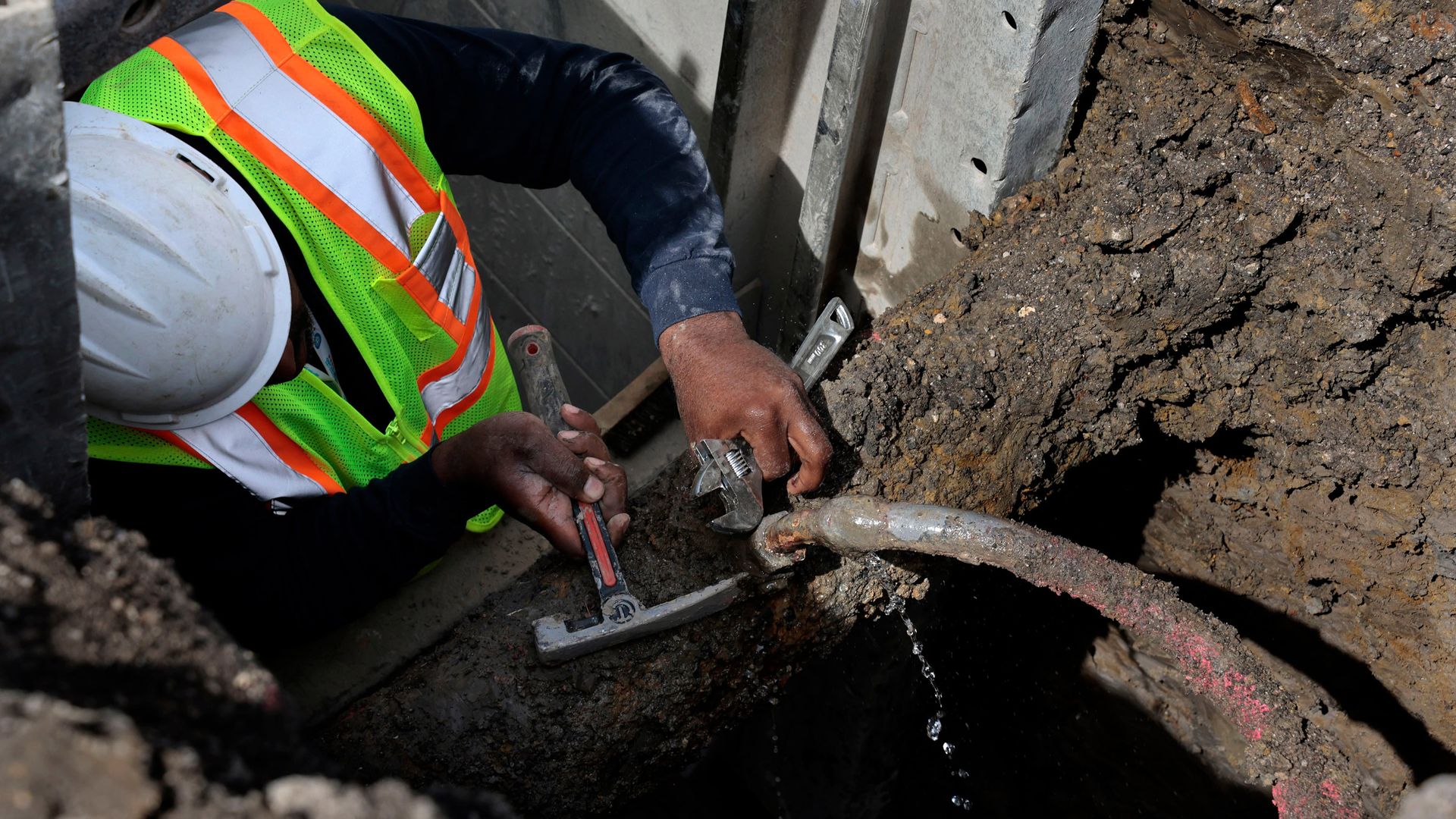
A worker repairing a leaking lead service pipe in Chicago in April 2023. Photo: Antonio Perez/Chicago Tribune/Tribune News Service via Getty Images
The Environmental Protection Agency (EPA) unveiled a proposal on Thursday that would require most U.S. cities to replace lead water pipelines within 10 years.
Why it matters: The EPA estimates that 9.2 million lead pipelines bring water to people across the U.S. The pipes can corrode over time when water has high acidity or low mineral content. Exposure to the extremely toxic heavy metal can have dangerous health effects.
- This risk was highlighted by the water crisis in Flint, Michigan, where approximately 99,000 residents were exposed to lead.
- It set off a public health emergency in the city, which is a predominantly Black community with high levels of poverty.
The big picture: The EPA said funding for the project will in part come from the 2021 Bipartisan Infrastructure Law. The legislation included $15 billion for lead service line replacement and $11.7 billion in safe drinking water funds that can also be used to replace pipes, per the EPA.
- In addition to replacing pipelines, the agency wants to lower the lead level threshold at which utilities are required to take action and improve tap sampling requirements.
- If a water system does have high levels of lead, the proposal would also require the managing utility company to make water filters available to all consumers.
Threat level: Lead, even in small amounts, is toxic to people of any age or health status.
- Lead poisoning can be hard to detect. High levels of exposure can be fatal, while lower levels can cause a wide array of negative health effects.
- Exposure is particularly dangerous for children. It's been known to damage their brains and nervous systems, affect growth and development, cause learning and behavior problems, as well as hearing and speech problems, according to the Centers for Disease Control and Prevention.
- The EPA said replacing lead pipelines could reduce heart disease, high blood pressure, kidney or nervous system problems among adults and improve IQ and attention span in infants and children.
Zoom out: People aren't just exposed to lead through faulty water systems.
- Detectable amounts of lead and other heavy metals are found in food, particularly produce, due to contaminated soil in growing environments.
- Lead is also routinely found in consumer goods, like clothing, usually from manufacturers using lead-based paints, which are often found in old buildings, as well.
Go deeper: Federal study: "Forever chemicals" detected in nearly half of U.S. tap water
